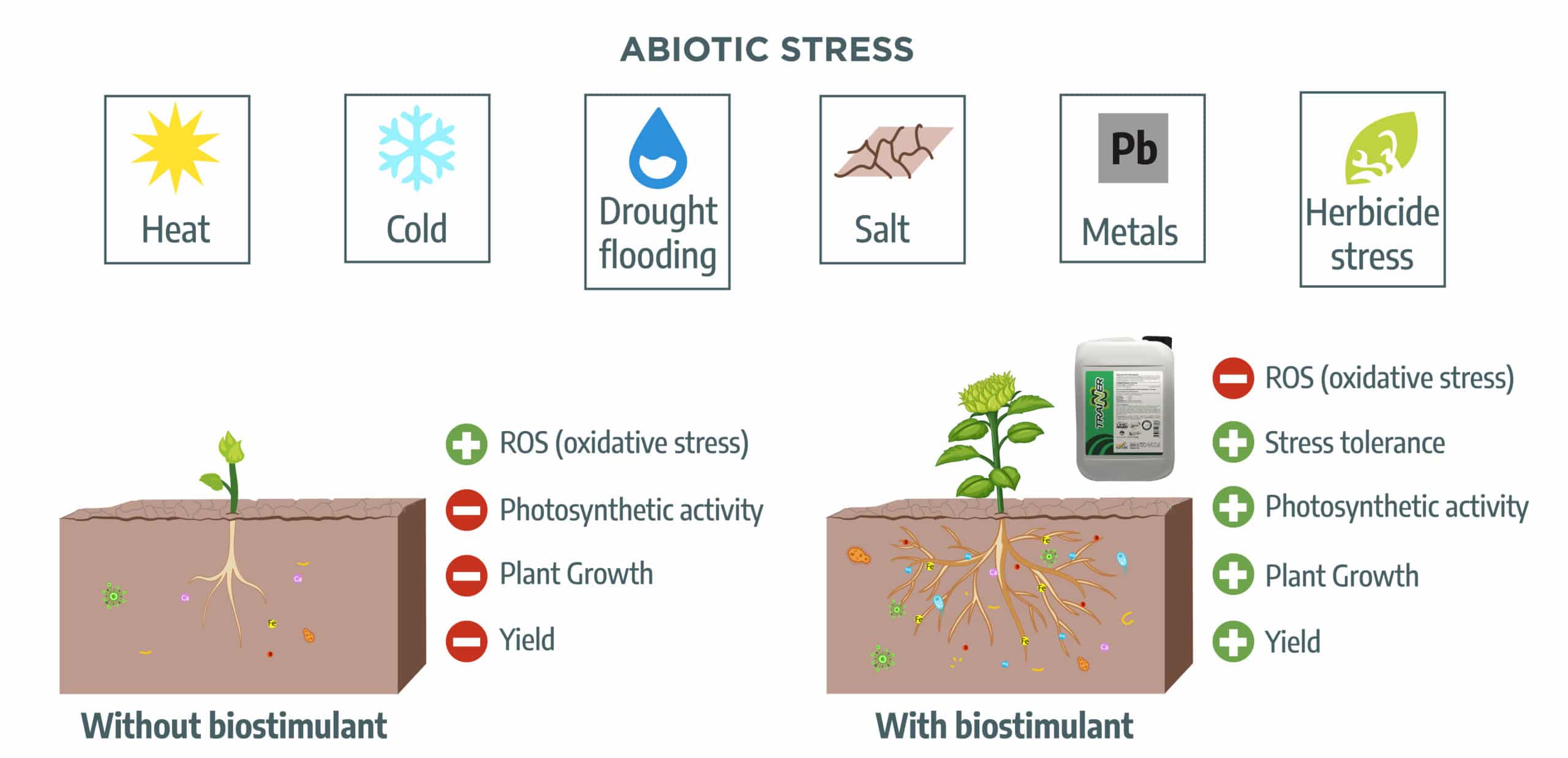
Plants are frequently subjected to stress, external conditions that adversely affect growth, development, and productivity. Stresses can be biotic caused by living organisms like weeds, pests, diseases or abiotic which are linked to the impact of non-living factors on the living organisms in a specific environment such as: temperature variations, frost, drought or excess of water, hail, wind, salinity, and nutrient deficiency. In agriculture, another significant abiotic stress could be represented by crop stress brought by herbicide application. Whereas a biotic stress would include living disturbances, abiotic stress factors, or stressors, are naturally occurring, often intangible and inanimate factors such as intense sunlight, temperature or wind that may cause harm to the plants and animals in the area affected. Abiotic stress is essentially unavoidable. Abiotic stress affects animals, but plants are especially dependent, if not solely dependent, on environmental factors, so it is particularly constraining.








